SHIFT #2: DRIVE ONE DIRECTION
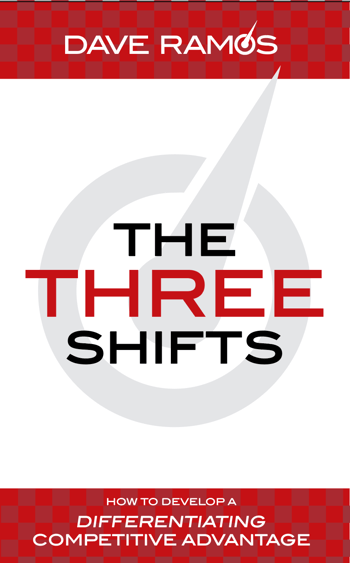
Misalignment is alarmingly common.
Virtually every company—even solopreneurs—suffers from it.
Organizational and societal factors have made alignment more difficult than it has ever been.
In addition, strategic alignment is mission-critical. In fact, we believe that every organization, regardless of size or industry or operating model needs strategic alignment.
So, if misalignment is alarmingly common, and creating alignment is more difficult than it has ever been, and every organization needs it, how do companies create strategic alignment?
SHIFT #2: Drive One Direction answers that question.
Our model is to engage everyone and align everything with your One Thing. This changes everything!
There are Twenty-One components. We call them “The Twenty-One Accelerators,” since each One is designed to accelerate the development of your Differentiating Competitive Advantage.
Once you Decide One Thing, you must begin to turn it into a Differentiating Competitive Advantage.
ONE TEAM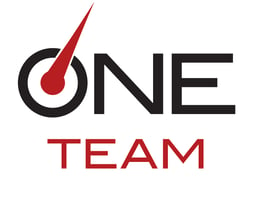
Every company has an executive team.
But most operate more like a team of rivals.
Your corporate executive team is ultimately responsible for creating alignment. Therefore, they must operate as One Team.
In addition, the entire corporate executive team must embrace alignment as a critical corporate initiative. There are several reasons for this:
- The corporate executive team is ultimately responsible for aligning the company’s multiple divisions, departments, functions, and geographies.
- The corporate executive team is ultimately responsible for aligning the interests of the company’s multiple stakeholders, including investors, creditors, employees, boards, vendors, customers, governments, the communities where you operate, and more. These stakeholders often have competing interests which must be aligned.
- The corporate executive team is ultimately responsible for aligning the company’s multiple strategies, tactics, goals, priorities, and initiatives into a coherent corporate strategic plan (One Plan).
- The corporate executive team is ultimately responsible for aligning the company’s resources—both human and financial—with the corporate strategy. Budgets must be allocated. Headcounts must be approved.
- Each corporate executive has the responsibility to align their functional area. The Chief Financial Officer must consolidate the budgets. The Chief Marketing Officer must integrate the marketing plans. The Chief Sales Officer must roll up the sales forecasts.
Finally, the corporate team “sets the bar” for alignment. If they are not aligned as One Team, the rest of the organization will be dysfunctional. They must be role models for alignment. A misaligned executive team will never create an aligned company.
That is worth repeating: a misaligned executive team will never create an aligned company.
Does your executive team operate as One Team?
ONE VISION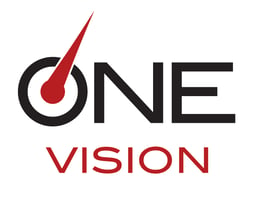
Every company has a vision.
But most of them are pretty blurry.
Only 35 percent of adults have 20/20 vision, and an even smaller percentage of companies do.
Most companies suffer from some sort of vision disorder, such as myopia—where they can’t focus on the long-term, or tunnel vision—where they get blindsided by market shifts and discontinuities.
Worse yet, according to Achievers’ North America Workforce report, a whopping 60 percent of employees did not know their company’s vision.
Fast-lane companies create alignment by having just One Vision. After all, how can you create One Company when every division has a different vision?
While it is critical to have One Vision, there are many ways to articulate one. In fact, we discovered four common ways:
- The “visionary” vision
- The “inspiring” vision
- The “company ambition” vision
- The "Big Hairy Audacious Goal (BHAG)" vision
Of course, you can't just create the vision, you must make the case for it. Every executive—not just the CEO—must be able to passionately articulate the vision and can explain why this is your vision.
Of all the visions you could have chosen, why did you select this One? If you can’t answer that question, no one will buy in.
Does your company have One Vision?
ONE MISSION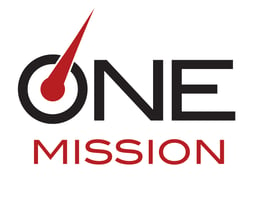
Your company has a mission.
Otherwise, you should not exist.
The term “mission statement” first appeared in an obscure U.S. Department of Commerce document published in 1960. Since then, it has become conventional wisdom to suggest that companies should have One.
While every company has a mission, our research revealed that many—but certainly not all—companies have mission statements.
Crafting a corporate mission statement can be an excruciating process.
In 1983, Bain and Company, the management consulting firm, embarked on the process of crafting a mission statement. The senior partners of the firm spent five days holed up in a cabin in New Hampshire. They agonized over every word and ultimately crafted this statement:
“We help our clients create such high levels of value that together we set new standards of excellence in our respective industries.”
Bill Bain, their founder and CEO, described it this way, “This is the combination of those things that we already do when we are at our best and those things that we need to do to be at our best more often.”
While most of the mission statements we reviewed were vanilla and uninspiring, a well-crafted One—like Bain’s—can help companies create alignment.
Of course, it is not enough to have One Mission; you must use your mission to guide both big strategic decisions and everyday tactics. You must align everyone—and everything—with it. You must prune things that are not aligned with your mission.
Is your company on One Mission?
ONE CODE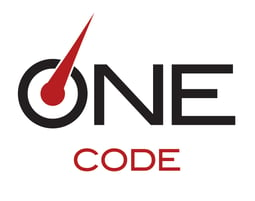
Every company has values.
But most struggle to make them more than just words on posters.
According to Wikipedia, a value system is “a set of consistent ethic values and measures used for the purpose of ethical or ideological integrity. A well-defined value system is a moral code.”
Most—but certainly not all—of the companies we studied had a codified list of core values.
Unfortunately, core values can also be a source of cynicism. Sadly, several CEOs we interviewed did not have their company’s values memorized. Dozens of employees shared stories of executives whose behaviors were in direct violation of their company’s values. Perhaps millions have been impacted by other forms of corporate hypocrisy.
Despair.com has built a very nice business selling posters mocking core values. Here are a few examples:
- Perseverance: The courage to ignore the obvious wisdom of turning back.
- Procrastination: Hard work pays off over time, but laziness always pays off now.
- Mediocrity: It takes a lot less time and most people won't notice the difference until it's too late.
Unfortunately, Gallup’s research revealed that only 23 percent of employees know how to apply their company’s values to their work. Nonetheless, we included core values as one of the Accelerators because many exemplar companies used them effectively to create alignment. Some of the common best practices include:
- They codified their values into One integrated value system. We call this your One Code.
- They passionately communicate the values, so everyone knows what they are.
- The employees—especially the senior executives—live them, breathe them, and personify them.
- They only hire people who share their values, and never tolerate behavior that violates them.
- They infuse their values into every fiber of the company, aligning every process, guiding every decision.
- They reward and recognize people who demonstrate their values.
- They justify them, so everyone knows WHY these are the values.
- They translate their values into a set of expected behaviors. (Netflix calls this their “Culture Code.”)
Core values can’t be seen on the balance sheet, but they can be one of your company’s most valuable assets. They can allow a company to withstand a crisis. They can guide leaders faced with radically complex decisions.
Assuming they are more than just words on posters in the break room.
Does your company have One Code of conduct?
ONE STRATEGY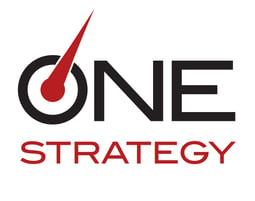
Every company has a corporate strategy.
But most people don’t understand what it is.
In a Strategy& survey of more than 1,900 executives, an astounding 80 percent said their strategy was not well understood within their own company.
Obviously, people can’t align with—or execute—a strategy they don’t understand.
Strategy is “one of those words.” Every company needs One, but even the strategy consulting firms don’t have a common definition for what a strategy is.
Rather than create a new definition of strategy or propose yet another framework, SHIFTPOINTS focuses on five critical strategy questions every company must answer in order to provide clarity to the organization:
- Which market segment(s) should you target?
- What product(s) and/or service(s) should you sell?
- Where should you compete?
- How much should you charge?
- What is your business model?
To unleash the accelerating power of alignment, your company must answer them clearly and precisely.
Has your company aligned everything into One Strategy?
ONE BRAND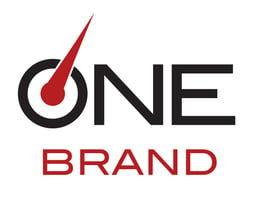
Every company has a corporate brand.
But most are undifferentiated and uninspiring.
Here’s the problem: people don’t align with undifferentiated and uninspiring brands.
Your corporate brand has many functions.
First, your corporate brand must be an umbrella. It must be large enough to cover all your products and services. It must work in all your geographies. It must appeal to all your stakeholders.
Second, your corporate brand must identify who you are and differentiate you from your competitors. Some of the key components of your corporate brand include:
- Your company name
- Your corporate logo
- Your corporate visual identity
- Your corporate value proposition
- Your corporate personality
- Your corporate tagline
So, perhaps you are thinking, “We have these things … so, we are aligned, right?”
Remember, people don’t align with undifferentiated and uninspiring brands. So, just because you have them does not automatically mean that they are any good.
Finally, your corporate brand must be a powerful magnet. It must attract the right people—including employees, customers, partners, and investors—to your company.
Does your company have One (inspiring) Brand?
ONE WAY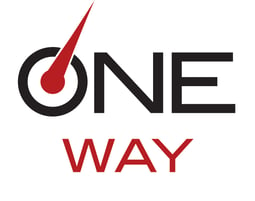
Every company has corporate standards.
But most have never optimized them.
When something is a corporate standard, it means that you have One—and Only One—Way of doing something. This might be as mundane as having One—and Only One—Way to complete an expense form or as significant as having One—and Only One—Way to perform heart transplants.
Companies make all kinds of things a corporate standard, such as:
- Their unique way of doing business
- Mission-critical business processes
- Policies or rules
- Dress codes
- Software applications
- The exact size and furniture for every office
- And more
Theoretically, these corporate standards are absolutely, positively, and non-negotiably the same everywhere in your company.
Everyone must comply with them. No exceptions.
While standardization can improve alignment, we advise companies to find the right balance. If nothing is standardized, there is chaos and anarchy. If everything is standardized, your company is a stifling bureaucracy.
Has your company optimized your One Way processes?
ONE PLAN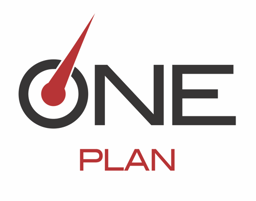
Every company makes plans.
For some, their long-range strategic plan outlines what they are going to do after lunch.
Fast-lane companies use both the planning process and the codified plan to accelerate alignment.
Unfortunately, according to Bain and Company, only 60 percent of executives think that their company’s planning process is effective.
Ideally, the output of an effective planning process is One clearly codified Plan. Most corporate plans contain the following elements:
- A strategic plan
- An annual operating plan
- A financial forecast and associated departmental budgets
- A headcount plan
- Strategic initiatives (the critical few) that are essential to accomplishing the plan
Ideally, your company will have just One Plan.
To document the plan, some companies create a deck of slides, some create a narrative, some create infographics, and others use cloud-based software.
Our preference is to summarize it on One Page.
Regardless of how you document it, it is imperative that you effectively communicate it.
Obviously, people cannot execute a plan they don’t understand.
Does your company consolidate everything into One Plan?




